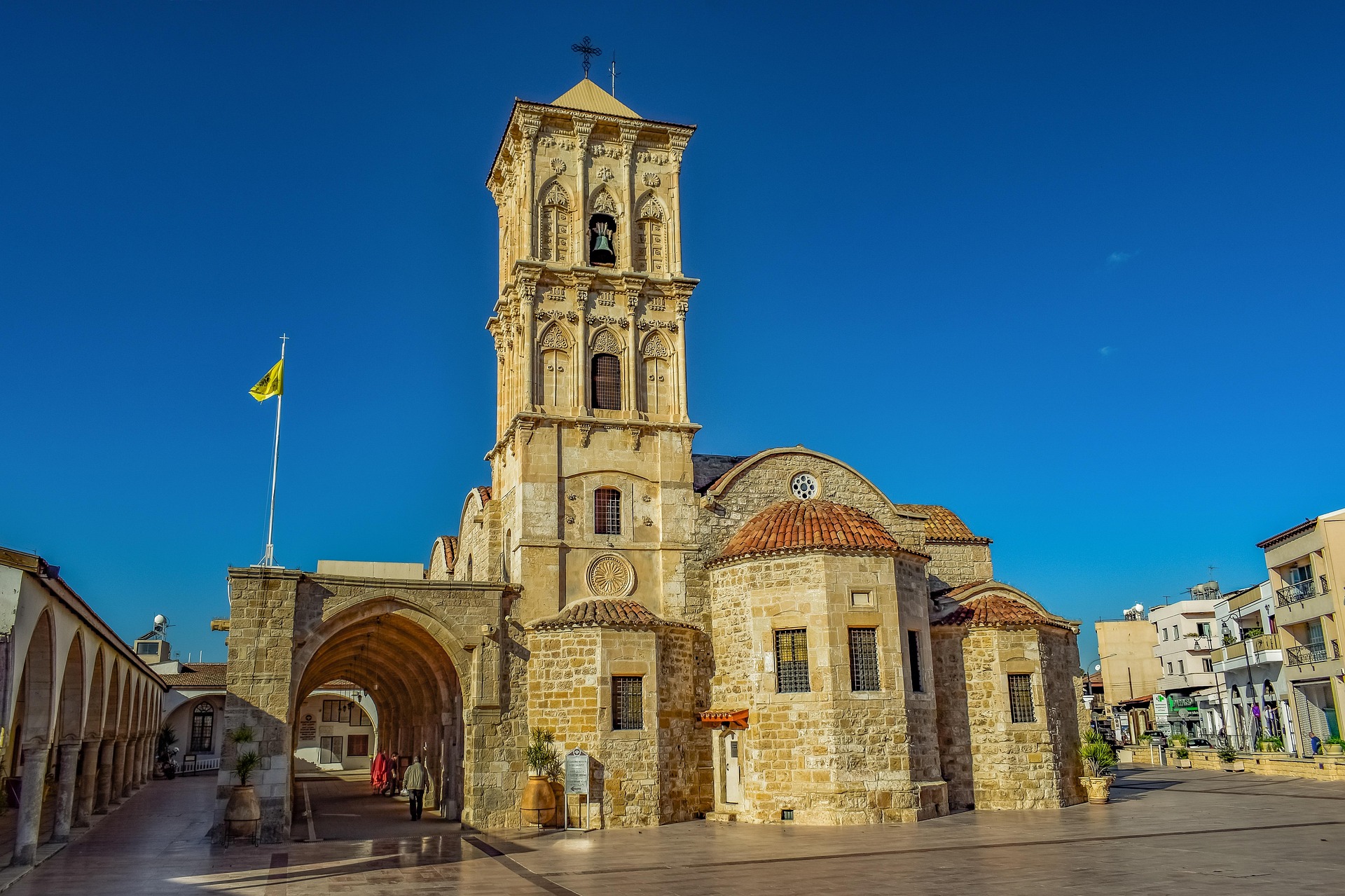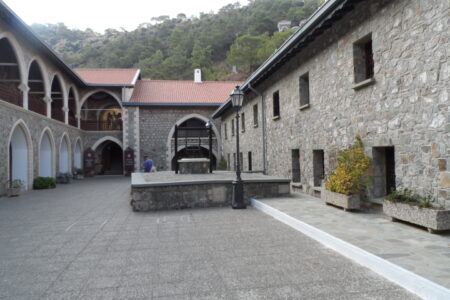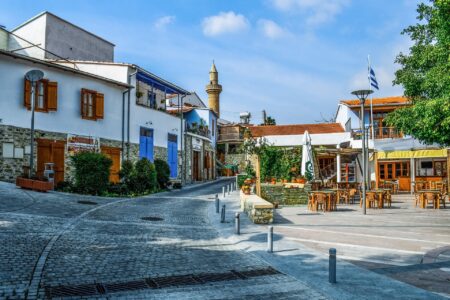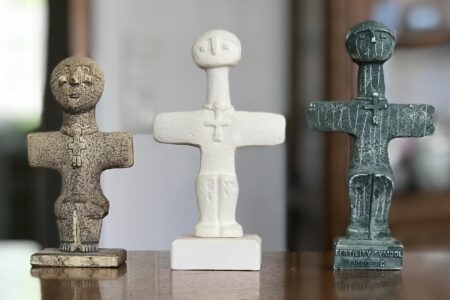The Church of Saint Lazarus in Larnaca stands as one of the most prominent historical and spiritual symbols of Cyprus. Over the centuries, this sacred temple has attracted not only pilgrims and believers but also tourists interested in the rich history, stunning architecture, and vibrant Mediterranean culture. In this detailed article, we explore various facets of the church—from its ancient legends and historical origins to modern restoration efforts and its role in contemporary cultural life.
Contents
- 1 Historical Context and Origins
- 2 Legends, Myths, and Spiritual Heritage
- 3 An Architectural Marvel: The Confluence of Eras and Styles
- 4 Restoration Efforts and the Preservation of Cultural Heritage
- 5 The Church as a Center of Spiritual and Cultural Life
- 6 Practical Recommendations for Tourists and Pilgrims
- 7 The Heart of Larnaca and a Heritage that Withstood the Test of Time
Historical Context and Origins
The Roots of the Legend and Early Construction
The history of the Church of Saint Lazarus dates back to the 9th century when the foundations of this sacred space were laid on the ancient lands of Kition. According to tradition, Jesus Christ resurrected Lazarus, who later became the first bishop of this region, thereby establishing the Christian legacy in Larnaca. This legend not only granted the church a sacred aura but also played a crucial role in shaping the spiritual identity of the local community.
Archaeological evidence and historical accounts indicate that the original structure underwent numerous reconstructions and expansions over the centuries. Each era introduced new elements that reflected the prevailing religious practices and architectural trends. This layered historical evolution creates a fascinating tapestry where ancient traditions blend seamlessly with subsequent epochs.
The Church’s Role in the Middle Ages
During the Middle Ages, the church functioned as more than just a place of worship; it served as an important educational and cultural center. It was the venue for regular liturgical ceremonies, gatherings of clergy, and even lessons for the local nobility. Amidst the challenges of invasions and social upheavals, the church remained a pillar of stability, offering solace and support to the community.
Historians note that it was within these very walls that the foundations of Cypriot Christianity were solidified, nurturing a unique religious identity that emerged after the early Christian era. The transmission of various relics through generations further elevated the status of the Church of Saint Lazarus as a revered pilgrimage destination for believers across the Christian world.
Legends, Myths, and Spiritual Heritage
The Legendary Saint Lazarus
One of the most enduring legends associated with the church centers on Saint Lazarus himself. According to the most famous tradition, after his miraculous resurrection, Lazarus not only became a symbol of divine intervention but also the patron saint of the entire region. His relics, said to rest in the crypt of the church, continue to inspire devotion among visitors. For many believers, a visit to this sacred place is a transformative spiritual experience that brings inner peace and renewal.
Mystical Events and the Preservation of Relics
For centuries, local folklore has been enriched with tales of miracles and mysterious happenings within the walls of the Church of Saint Lazarus. Stories abound of moments during which individuals in deep despair found solace and healing after praying within the sacred space. Such accounts, imbued with a touch of mysticism, have contributed to the church’s reputation not only on the island of Cyprus but also among the wider Christian community.
Spiritual Significance for the Modern Community
Today, the legacy of Saint Lazarus is very much alive. For many, visiting the church is far more than a mere sightseeing excursion; it is an opportunity to pause, reflect, and seek answers to life’s profound questions. Annual religious ceremonies, forums, and conferences held at the church create a unifying space that brings together people of different ages and faith backgrounds. This ongoing spiritual dialogue ensures that the church remains a vital hub for communal worship and personal introspection.
An Architectural Marvel: The Confluence of Eras and Styles
The Eclecticism of Architectural Forms
The Church of Saint Lazarus is a striking example of how architectural ingenuity can combine elements from different eras. Originally constructed in the Byzantine style, the building later absorbed influences from Gothic and Baroque architecture, resulting in a unique synthesis of form and decoration. Intricate wrought-iron details, exquisite mosaics, and vibrant stained glass windows are the results of numerous restoration projects—all of which have been carried out with a deep respect for the original design and spiritual essence.
Interior and Artistic Adornments
Inside the church, visitors are greeted by an atmosphere of grandeur and meticulous artistic detailing. The walls are adorned with frescoes depicting various Biblical scenes, while the centerpiece—a masterfully crafted iconostasis—commands attention with its intricate design. Every element of the interior, from luxurious tapestries to finely carved wooden accents, has its own story, drawing visitors into a world where art and spirituality converge.
The Bell Tower and the View Over Larnaca
Among the most captivating features of the church complex is the bell tower. Not only does it allow the resonant sound of ancient bells to echo over the city, but it also offers a panoramic view of Larnaca and its surroundings. From this elevated vantage point, one can witness the harmonious blend of historical architecture with modern urban elements—a visual representation of the city’s evolving character.
Restoration Efforts and the Preservation of Cultural Heritage
Technical Details of the Restoration
In recent decades, extensive restoration efforts have been undertaken to preserve the church’s original character and historical integrity. Experts have employed both traditional techniques and modern technologies to restore the church to its former glory. From reviving original frescoes to reinforcing structural elements, every aspect of the restoration is meticulously planned and executed to maintain the authenticity of the ancient materials and craftsmanship.
Collaboration with International Experts
The restoration projects often involve close collaboration between local specialists and international experts. This cooperative approach not only facilitates the exchange of valuable knowledge and innovative restoration techniques but also ensures that the church’s preservation meets the highest international standards. Such partnerships have reinforced the Church of Saint Lazarus as a sterling example of successful cultural conservation.
The Role of Government Support and Local Communities
State institutions and local initiatives play a crucial role in safeguarding this historical and cultural treasure. Regular funding, charitable projects, and the tireless efforts of volunteers have made it possible to organize guided tours, cultural events, and educational programs. These endeavors help to pass the legacy of the church on to future generations, ensuring that the traditions of the past continue to inspire and educate.
The Church as a Center of Spiritual and Cultural Life
Pilgrimage and Religious Celebrations
For countless believers, the church remains a sacred sanctuary—a place where they can pay tribute to a profound historical legacy and find spiritual solace. Annual religious celebrations in honor of Saint Lazarus draw large numbers of pilgrims from across the world. These festivities provide an opportunity for communal bonding, cultural exchange, and personal spiritual renewal, reaffirming the church’s role as a living center of faith.
Cultural Events and Exhibitions
In addition to its religious functions, the Church of Saint Lazarus frequently hosts cultural events such as art exhibitions, concerts, and lectures. This eclectic mix of events attracts not only the faithful but also art enthusiasts, historians, and architecture aficionados. The church, therefore, transforms into a multifaceted venue where spiritual and cultural heritages intersect, offering enriching experiences for every visitor.
Educational Programs and Tourist Excursions
For those eager to learn more about its storied past, the church offers a comprehensive educational program. Expert guides provide detailed tours that cover the building’s architectural nuances, its interior masterpieces, and lesser-known historical anecdotes related to Saint Lazarus and other sacred relics. These guided excursions serve as a fascinating journey through time, deepening visitors’ appreciation of Larnaca’s cultural heritage.
Practical Recommendations for Tourists and Pilgrims
The Best Time to Visit
To fully absorb the unique atmosphere of the Church of Saint Lazarus, it is advisable to plan your visit during the early morning hours. The soft morning light streaming through the ancient windows creates an ambiance of tranquility and reverence, ideal for photography and quiet reflection.
Dress Code and Etiquette Recommendations
Respect for the sacred nature of the church is paramount when planning a visit:
-
Clothing: It is recommended to dress modestly and comfortably. Men should avoid wearing shorts or tank tops, while women are advised to choose attire that is respectful and not overly revealing.
-
Conduct: Visitors are expected to maintain a quiet demeanor inside the sacred premises. Adhering to the established guidelines ensures that the solemnity of the environment is preserved.
Photography and Moments for Reflection
The church offers myriad opportunities for capturing its rich details—from the ornate interior decorations to the striking architectural elements. However, note that photography may be restricted during certain ceremonies or events. It is always best to check the guidelines prior to your visit. Many visitors also find that the serene atmosphere of the church provides a perfect setting for personal contemplation and meditation.
Nearby Infrastructure and Additional Excursions
Situated in the vibrant center of Larnaca, the church is ideally located for combining your visit with a stroll through the city’s historic streets. In the vicinity, you will find charming cafes, small museums, and souvenir shops where you can purchase mementos of your journey. For those interested in delving deeper into the region’s history, several local museums and additional chapels offer further insights into Cyprus’s rich cultural tapestry.
The Heart of Larnaca and a Heritage that Withstood the Test of Time
The Church of Saint Lazarus in Larnaca is not merely an architectural monument; it is a living testament to the enduring legacy of history, spiritual richness, and cultural diversity in Cyprus. From ancient legends to modern restoration projects, every aspect of this remarkable structure tells a story of unwavering faith, timeless traditions, and a relentless commitment to preserve a unique heritage for future generations.
A visit to this hallowed sanctuary is an immersive journey into the past—a chance to experience the palpable spirit of history and the deep cultural significance imbued in every stone. Whether you are a pilgrim, a history buff, or simply someone who appreciates beautiful and evocative narratives, the Church of Saint Lazarus promises an unforgettable experience, inspiring you with its profound story and inviting you to reflect on the importance of preserving our shared cultural heritage.
May this sacred place continue to serve as a source of inspiration, spiritual growth, and a reminder of the enduring value of tradition in our ever-changing world. Every visit is an opportunity to discover a new facet of the rich history that unites the past, present, and future of Cyprus.
















